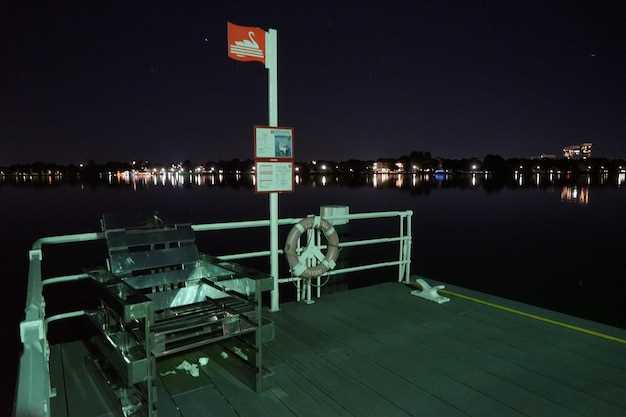
Installing LED lights on your boat can significantly enhance your marine experience. Whether you are fishing at dawn or enjoying a leisurely evening cruise, proper lighting is essential for safety and ambiance. LED lights offer numerous benefits over traditional lighting options, including energy efficiency, longer lifespan, and reduced heat generation.
In the world of marine technology, LED lights have become the preferred choice for boaters. Their durability and resistance to water make them well-suited for marine environments, where resistance to corrosion and moisture is critical. This guide will walk you through the steps needed to select, install, and maintain LED lights on your boat, ensuring a seamless and enjoyable installation process.
Understanding how to properly integrate led lights into your boat’s existing electrical system will allow you to optimize their performance and functionality. From underwater lights to cabin illumination, the versatility of LED options ensures that your boating experience will be both safe and illuminated.
Choosing the Right LED Strip for Marine Use
When selecting an LED strip for marine environments, it’s crucial to consider both durability and functionality. Marine conditions can be harsh, with exposure to saltwater, humidity, and UV rays. Therefore, choosing a strip designed specifically for marine use is essential.
Firstly, look for waterproof LED strips, typically rated at least IP67 or higher. This indicates that the lights can withstand immersion in water, providing protection against splashes and rain. Additionally, UV resistance is important to prevent the degradation of the strip due to prolonged sun exposure.
Next, consider the brightness and color temperature of the LED strip. Depending on your application, you may want cool white lights for functional areas or warmer tones for ambiance. It’s advisable to opt for strips with adjustable brightness or color changing capabilities to suit different moods and needs on your boat.
Power consumption is another significant factor. Since powering the LED strip will usually come from your boat’s battery, select energy-efficient options that offer maximum output without draining your resources excessively. Look for LED strips with a low wattage per foot, ensuring they provide ample light while conserving energy.
Lastly, assess the installation process. Some LED strips come with adhesive backing, while others may require additional mounting hardware. Choose a type that suits your installation skills and the specific locations on your boat. Remember to verify that any connectors or solder points are also rated for marine use to avoid future failures.
Step-by-Step Installation Process for Marine Lights

Installing LED marine lights enhances visibility and safety on your boat. Follow these steps for a successful installation of LED strip lights.
Step 1: Gather Your Materials
Before starting, collect all necessary materials including LED strip lights, a power source (such as a battery), marine-grade adhesive, connectors, and tools like a wire stripper and screwdriver.
Step 2: Choose the Installation Location
Decide where to place the LED strip on your boat. Common locations include the perimeter of the deck, under the cockpit, or along railings. Ensure the surface is clean and dry for optimal adhesion.
Step 3: Measure and Cut the LED Strip
Measure the length required for your chosen location. Most LED strips can be cut at designated points. Ensure you only cut where indicated to avoid damaging the circuit.
Step 4: Prepare the Surfaces
Clean the surfaces with rubbing alcohol to remove any dust or grease. This step is crucial for the adhesive to bond properly and ensure longevity.
Step 5: Attach the LED Strip
Peel off the backing tape from the LED strip and carefully press it onto the prepared surface. For extra security, use marine-grade adhesive along the edges of the strip.
Step 6: Connect the Power Source
Using wire strippers, prepare the ends of the LED strip connectors. Connect the positive and negative wires from the strip to your power source, following the manufacturer’s instructions for polarity.
Step 7: Test the Lights
Before finalizing your installation, turn on the power source to test the lights. Ensure all sections of the LED strip illuminate properly. If any part is not functioning, check the connections and the strip itself.
Step 8: Secure and Protect the Wires
Once testing is complete, secure the wires to prevent movement. Use zip ties or adhesive clips to keep them in place, and protect them from water exposure.
Step 9: Clean Up
Dispose of any excess materials and tools properly. Ensure the installation area is free from debris to maintain safety on your boat.
Step 10: Enjoy Your New Lights
Your marine LED lights are now installed! Enjoy the enhanced aesthetics and safety that they provide during nighttime outings on the water.
Maintaining and Troubleshooting Your Boat’s LED Lighting System

Regular maintenance of your boat’s LED lighting system is essential for ensuring optimal performance and longevity. Start by inspecting the marine strip lights periodically for signs of wear and damage. This includes checking for frayed wiring, corrosion at connection points, and the integrity of the light housings. Any damaged components should be replaced promptly to avoid further complications.
Clean the LED lights and their surrounding areas often to prevent dirt and grime from affecting their brightness. Use a mild detergent with water and a soft cloth to avoid scratching the surface of your lights. Additionally, ensure that any exposed wiring is shielded from moisture and UV rays, as these elements can significantly degrade the performance of your lights over time.
Troubleshooting is a critical aspect of maintaining your LED lighting system. If you experience issues such as flickering or complete failure, start by checking the power supply. Verify that the battery is fully charged and the connections are secure. A loose or corroded connection can lead to erratic lighting performance. If the power supply is functioning correctly, test the individual LED strip lights and replace any units that are not working.
If your marine strip lights exhibit inconsistent brightness, consider the possibility of overheating. Ensure that your lights are appropriately rated for their intended use, and that they have adequate ventilation. Upgrading to higher quality LED lights designed specifically for marine environments can also help mitigate these issues.
In the event that you encounter more complex problems, refer to the manufacturer’s documentation for specific troubleshooting steps. Many companies provide detailed guides for diagnosing and resolving common issues with their LED lighting systems, ensuring you can keep your boat illuminated and safe during your journeys.



